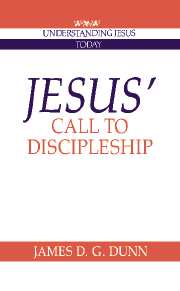5 - Would Jesus Have Been Disappointed with the Church?
Published online by Cambridge University Press: 01 February 2010
Summary
Jesus proclaimed the Kingdom of God; and, it was the church which came.
(Alfred Loisy, L'Evangile et l'Eglise, p. 153)Introduction
So far we have looked at discipleship primarily in terms of Jesus' call to individuals. It was a call which did not defer to wealth and privilege, and which was not determined by religious convention. It was a discipleship of the poor and sinners. At the same time, Jesus' favorite image of the Kingdom of God has a corporate dimension. And the categories of poor and sinners are nothing if they are not social categories. What, then, about the corporate dimensions of discipleship? What about the internal dynamics of the group of disciples? How did Jesus expect his disciples to relate to each other? Some of the earlier discussion, of course, overlaps into this area too. Love of neighbor includes, as a special case, love of fellow disciple. Jesus' table-fellowship was a paradigm of mutual relations among the disciples as well as with sinners. To cut across boundaries drawn by others did not mean that the disciples of Jesus were not themselves a recognizable group. What then were its characteristics as a group and in the mutual relationships of disciple with disciple?
The same area of discussion can be approached from another angle. Did Jesus intend to establish the church? Is the church what Jesus wanted? Would he have recognized it? Does “the church which came” match with his expectation of the coming Kingdom of God?
- Type
- Chapter
- Information
- Jesus' Call to Discipleship , pp. 92 - 120Publisher: Cambridge University PressPrint publication year: 1992



